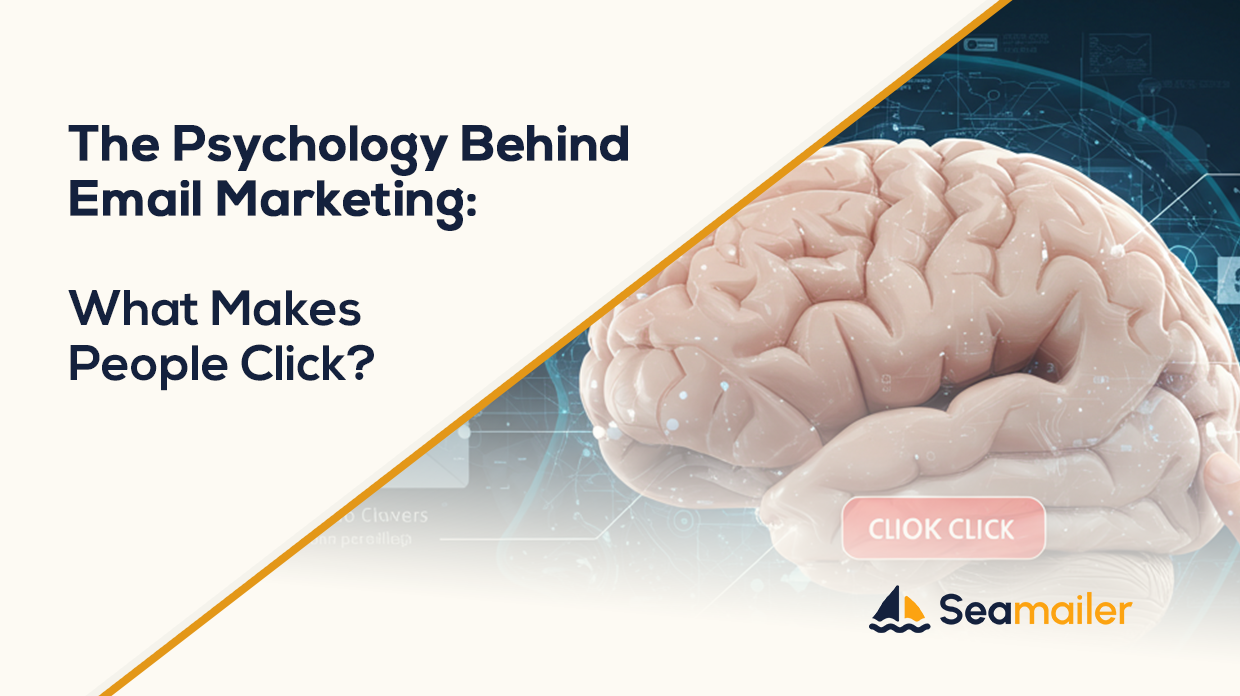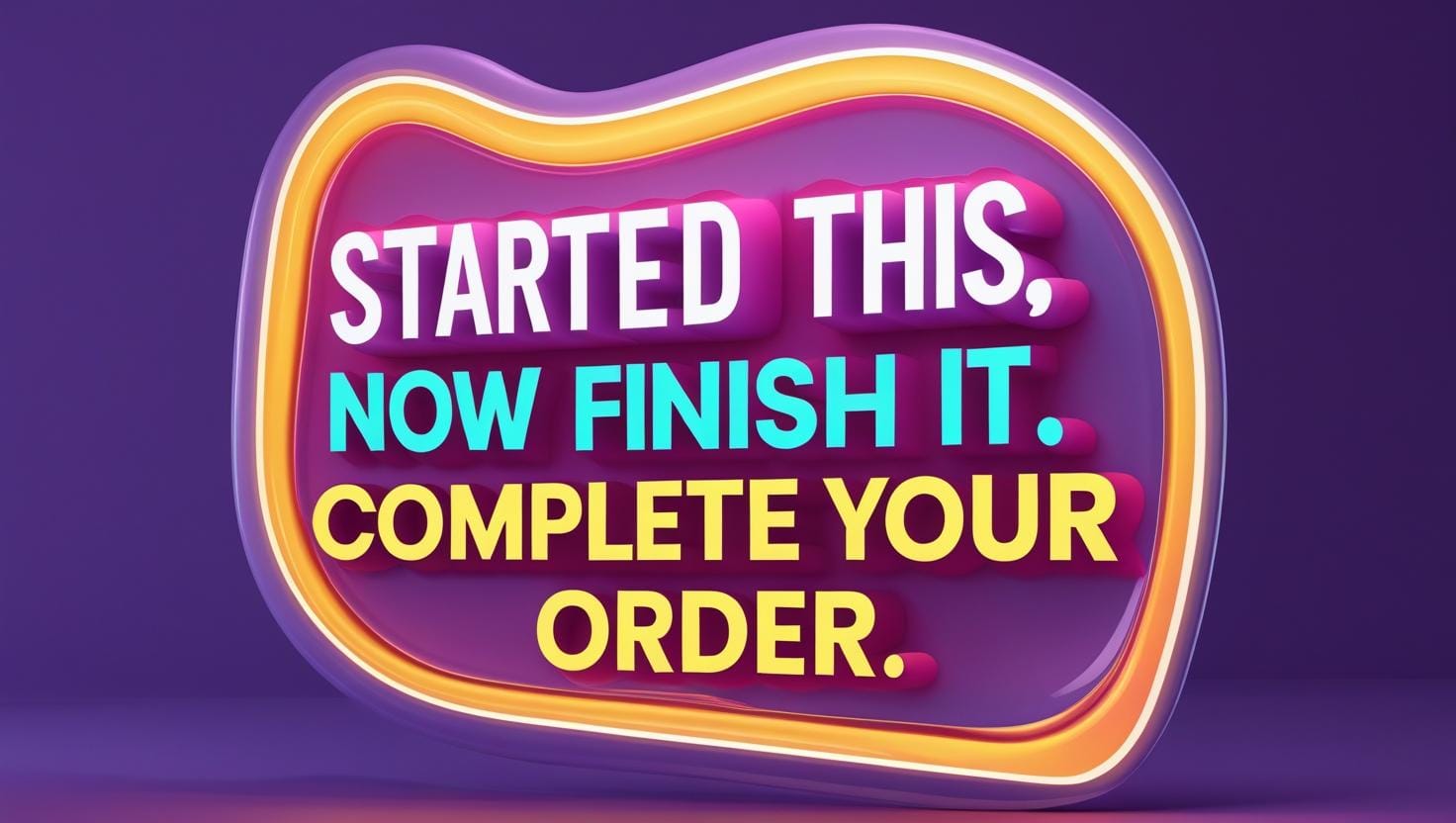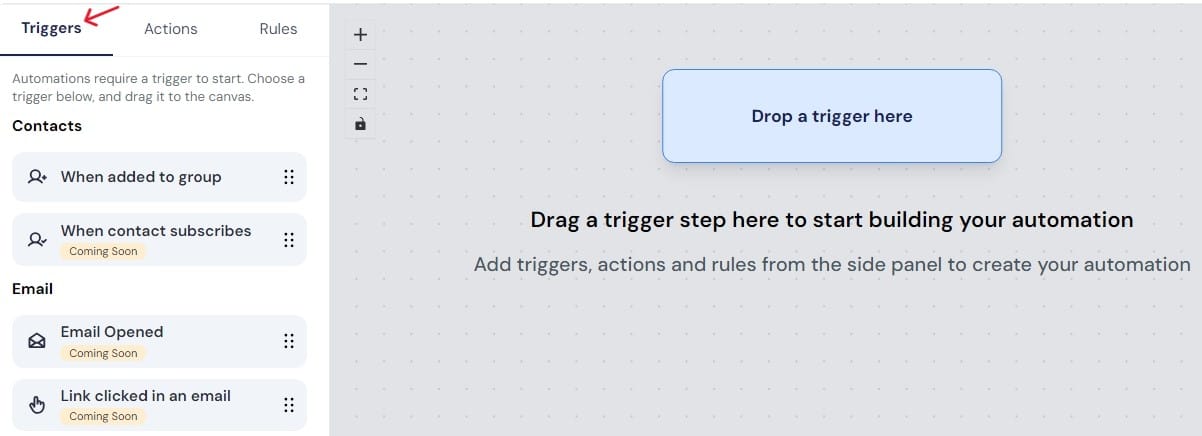The Psychology Behind Email Marketing: What Makes People Click?

You’ve spent hours crafting the perfect email campaign eye-catching design, snappy subject line, persuasive copy. You hit "send" and wait. But when you check your analytics, your open and click-through rates are underwhelming.
Sound familiar?
You're not alone. In a digital world overflowing with messages, most inboxes are cluttered and chaotic. To break through the noise, it’s not just about what you send it’s about how you tap into your audience’s brain.
Email marketing works best when it's built on psychology. By understanding the mental and emotional drivers that influence human behavior, you can create emails that people want to open, need to click, and feel compelled to act on.
In the world of email marketing, the battle doesn’t start with your offer or your call-to-action it starts in the inbox. Before anyone sees your beautifully designed template or reads your compelling copy, they must first decide to click “open.” This simple act hinges on something deeper than just interest: it taps into human psychology.
Why do some emails get opened instantly while others are ignored or deleted? The answer lies in how people think, feel, and behave. Understanding these psychological triggers gives marketers an advantage and when you use them ethically and effectively, you can significantly boost your open rates and engagement.
Continue reading to find out:
- Why psychology matters in Email Marketing
- Core psychological principles that drive email marketing
- Cognitive Biases That Influence clicks
- Emotional Triggers That Boost Engagement
- Crafting Emails That Click: From Subject Line to CTA
- Using Visual Design to Influence Decisions
- How seamailer Helps You Tap into Psychology at scale
- Conclusion
Why Psychology Matters in Email Marketing
Emails are more than digital messages, they’re mini-conversations designed to spark action. Psychology helps decode what makes a reader open, click, and convert. Without psychology, your emails are just noise in a crowded inbox.

Core Psychological Principles That Drive Email Engagement
What makes someone stop scrolling, click your email, and take action? It comes down to a few key psychological principles deeply rooted behaviors that shape how we respond to messaging.
Curiosity
The Irresistible Pull of the Unknown. Human brains are wired to resolve uncertainty. When people encounter a knowledge gap like a cliffhanger subject line or an unanswered question they feel compelled to fill it.
How to use it:
Craft subject lines that tease a benefit or insight without revealing it. For example:
“You’re Missing Out on This Growth Strategy…”
“A Quick Hack That Doubled Our Email Revenue”
“Why 74% of People Ignore Your Emails (and How to Fix It)”
The key is to spark intrigue without misleading your reader.
Emotional Triggers: Feelings Drive Actions
Emotions are more powerful than logic when it comes to decision-making. In fact, neuroscientists have found that people with impaired emotional centers in the brain struggle to make even simple decisions.
How to use it:
Incorporate emotion-driven language in your copy. Words that evoke excitement, fear, urgency, nostalgia, or joy create stronger reactions than neutral or overly professional language.
Example triggers:
Fear of missing out: “Only 24 hours left…”
Joy: “Surprise! A Gift for Our Most Loyal Subscribers”
Relief: “Finally, a Simpler Way to Do Email Marketing”
Personalization
The Power of Feeling Seen. No one likes to feel like just another number. Personalized emails those that reflect the recipient’s name, behavior, or preferences stand out because they feel tailor-made.
How to use it:
Use first names in subject lines or greetings.
Segment your list based on past behavior (e.g., product interest, geographic location, purchase history).
Trigger emails based on user actions (abandoned cart, product view, etc.).
Studies show that personalized emails have 6x higher transaction rates than generic ones.
Social Proof
People trust the experiences of others. When they see that others have taken action (or found value in something), they’re more likely to do the same.
How to use it:
Include customer reviews or ratings in your emails.
Showcase case studies or success stories.
Add counters like “Join 12,000+ marketers already using this tool.”
Social proof creates confidence and reduces decision-making friction.
Scarcity and Urgency: The FOMO Effect
Few things motivate action like the thought of missing out. Limited-time offers, countdown timers, and exclusive access tap into the natural human fear of loss.
How to use it:
Time bound offers: “Sale ends tonight!”
Scarcity statements: “Only 10 spots left”
Early access language: “Get it before it’s gone”
Urgency, when used ethically, accelerates decision-making without feeling pushy.
Cognitive Biases That Influence Clicks
Understanding how the brain makes decisions can help you optimize every part of your email from subject lines to CTAs.
Zeigarnik Effect
People remember uncompleted tasks. Tease a solution in your email and close the loop with your CTA.
Example:
“You started this, now finish it complete your order.”

Baader-Meinhof Phenomenon
When people see something once, they start noticing it everywhere. Repetition reinforces brand recall.
Example:
A consistent design and message in emails, retargeting ads, and social posts creates this bias.
Anchoring Bias
First impressions stick. Mentioning a high price first makes your actual offer seem like a better deal.
Example:
“Others pay $299/month—get it now for just $29.”
Loss Aversion
People fear losing more than they enjoy gaining. Highlight what they’ll miss out on.
Example:
“Don’t lose your spot register before it’s gone.”
Cognitive Dissonance
People avoid inconsistency in their behavior. Help them align their actions with their values.
Example:
“You care about your business growth, here’s a smarter email tool that supports it.
Emotional Triggers That Boost Engagement
Fear : Protect your business before it’s too late.
Belonging: Join thousands of entrepreneurs who trust us.
Gratitude: Thanks for being part of our journey.”
Excitement: Big news! You’re invited.
Curiosity: We’ve got a surprise for you.
Pairing these triggers with relevant imagery and tone creates emails that feel personal even when automated.

Crafting Emails That Click: From Subject Line to CTA
Subject Line: Make it punchy, emotional, and curiosity-driven.
Preview Text: Support the subject and tease value.
Body Copy: Use short paragraphs, bold for emphasis, and emotional storytelling.
CTA: Make it bold, visible, and action-oriented: “Try it now,” “Claim your spot,” See how it works.
Using Visual Design to Influence Decisions
Design isn't just decoration it directs behavior.
Use arrows or buttons to guide eye movement to CTAs.
Color psychology matters: red for urgency, blue for trust, green for go.
Mobile-first design ensures your visuals drive action across devices.
How Seamailer Helps You Tap into Psychology at Scale
Seamailer isn’t just a tool it’s your behavioral marketing partner.
With Seamailer you can:
- Segment audiences based on behavior and demographics
- Personalize emails using smart tags and automation
- A/B test subject lines and content using real-time psychological insights
- Track behavior like clicks, scroll depth, and conversion patterns
All with an intuitive interface that makes psychological email marketing accessible to all.
Conclusion
Email marketing isn’t just about open rates or fancy templates it’s about understanding people. When you tap into what truly motivates your audience their fears, hopes, curiosities, and behaviors you turn emails into high-performing assets.
With seamailer you get the power to apply these psychological principles at scale so every email feels like it was written just for them.

